RHS Chelsea Flower Shows
The BES has exhibited at the RHS Chelsea Flower Show four times, winning Silver Gilt and Bronze for our gardens showcasing ecology.
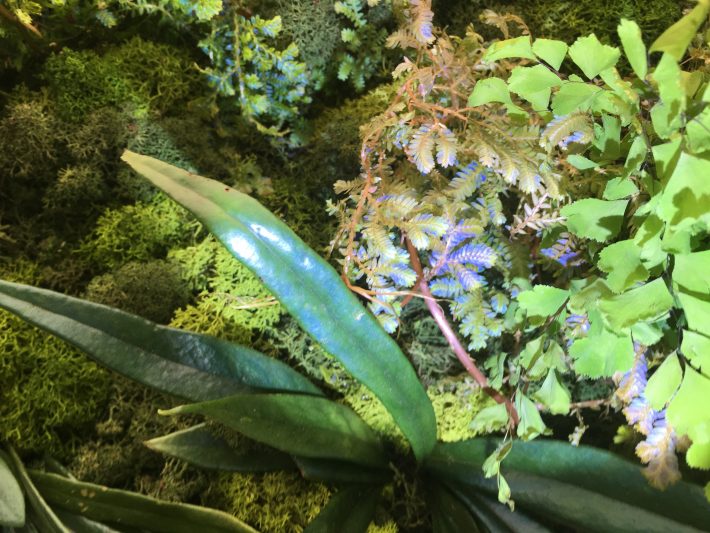
Chelsea 2017: Delight in the Dark
Situated in the Discovery Zone of the show ground, Delight in the Dark explored the wonderful adaptations that enable plants to thrive in the shade.
Designed by Janina Lileikyte and Lucy Summers, and built by Justin Bailey, the urban basement garden demonstrated that by understanding the ecology of shade plants and harnessing their hidden talents and beautiful characteristics, even the shady, overlooked spaces can be exciting.
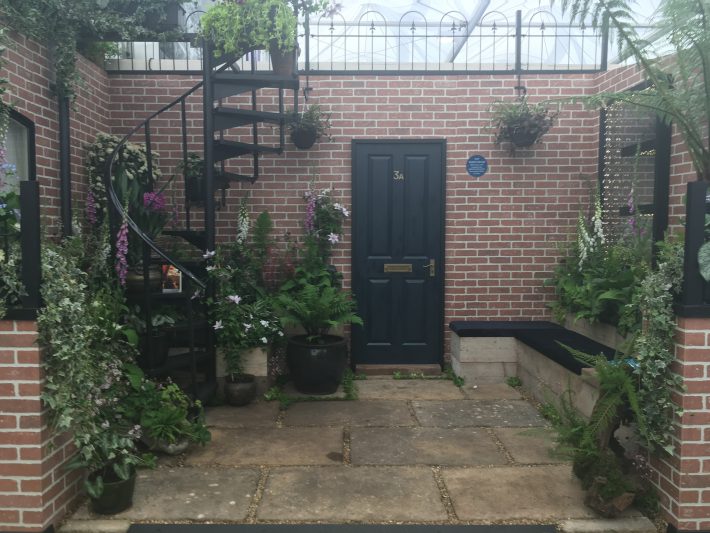
Throughout the show we engaged a steady stream of visitors with the ecology of shade plants, including the comedian Bill Bailey, who spent some time exploring the exhibit and the beautiful plants it featured.
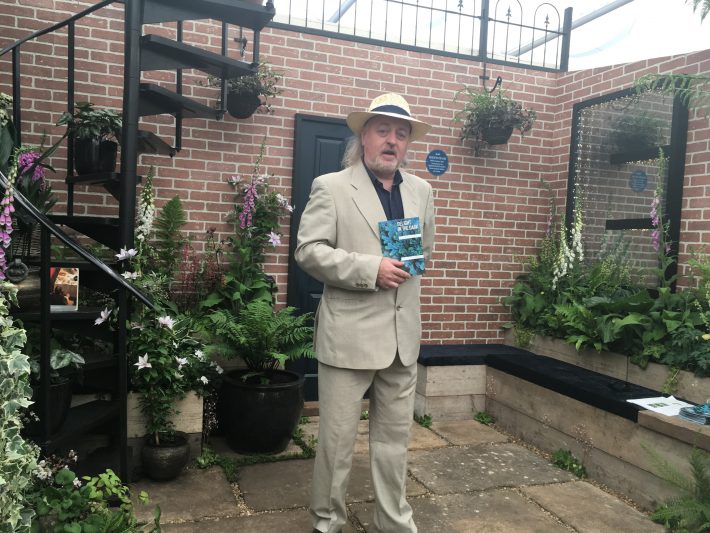
Working closely with the Whitney Research Group at Bristol University, we were thrilled to exhibit iridescent plants. Visitors were invited to interact with these – planted in our living wall – using lights which increase the perception of iridescence.
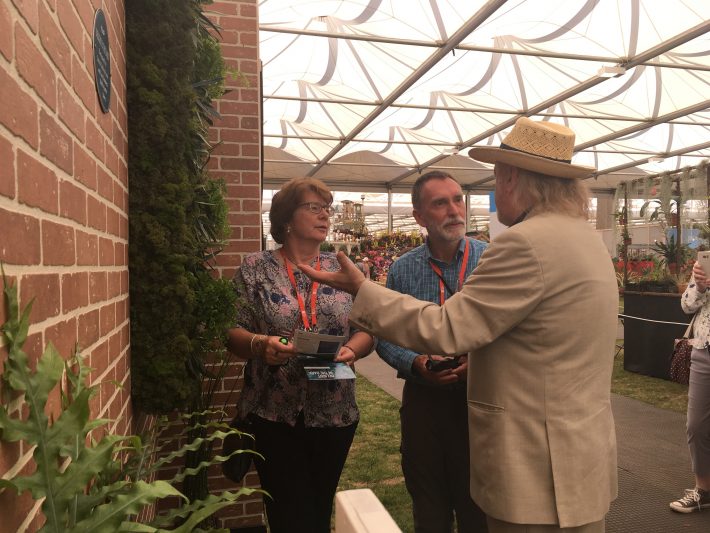
Staffed by active scientists many of whom worked within the botanical sciences, visitors were able to get up close to the plants and discover the various mechanisms that enable them to thrive in shady areas.
These mechanisms included:
- Plant structure: Plants need plenty of light to grow fast, so all genuinely shade-tolerant plants grow slowly. They’re usually tough too, to avoid being eaten. Aspidistra sp. is a good example of this.
- The timing of plant growth: Not all plants found in the shade are shade tolerant. Plants such as Bluebells and Lily of the Valley flower in spring, taking advantage of the light before trees develop leaves and block out the light. Others such as Digitalis spp. take advantage of short windows of light, like those created when a tree falls during a storm.
- Structural variegation: Plants often have areas on the leaf which are lighter than others. In some cases this is caused by a variation in pigment. In plants such as Brunnera macrophylla ‘Jack Frost’ these lighter patches indicate gaps within the leaf that help the internal reflection of light
- The relationship between ferns and hornworts: Ferns are incredibly successful in the shade. One reason is the presence of a light-sensing pigment called neochrome. This has been traced back to the hornworts, a group of unassuming moss-like plants. It is thought this was transferred to ferns via a process called horizontal gene transfer.
- Plant iridescence: Some deep shade plants have developed iridescence. This can improve the plants ability to capture light, increasing photosynthesis efficiency in dim light by as much as 5-10%. Microsorum thailandicum and Selaginella willdenowii are a great example of this.
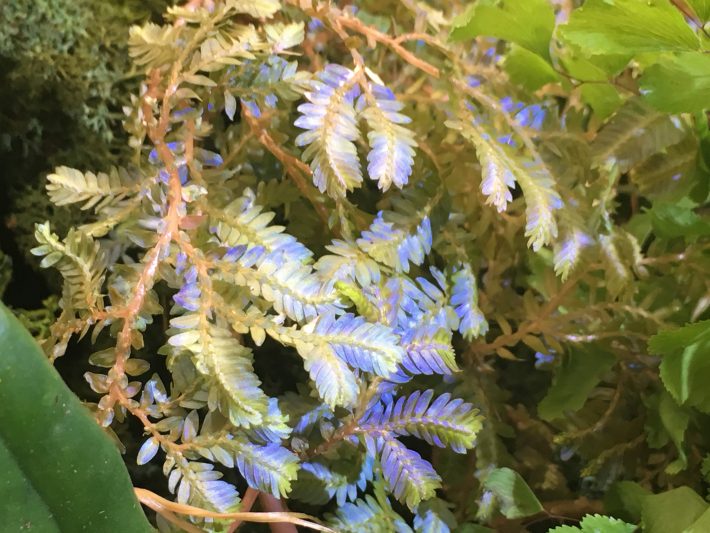
Iridescent plant Selaginella willdenowii Jessica Bays
RHS Chelsea 2016.
We were thrilled to be awarded a Silver Medal for our Discovery Zone display at RHS Chelsea 2016. Showcasing fantastic plants and exciting ecology, we invited visitors to explore the astonishing relationships between plants and their pollinators.
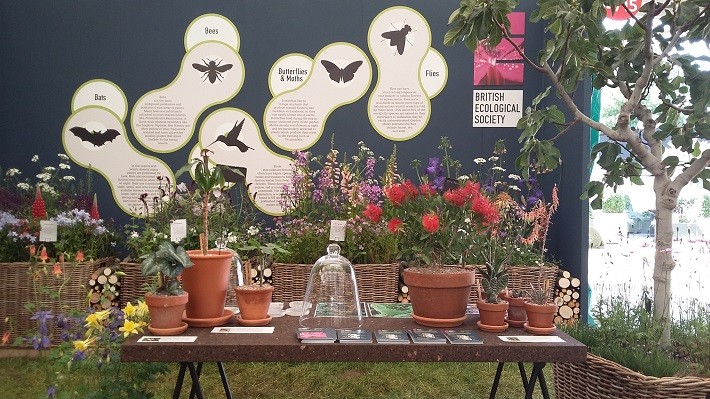
The plants that feature in the display were chosen because they are attractive to pollinators, either in the UK or further afield, and range from plants common to UK gardens, to rarer more exotic specimens. To find out more about the plants that feature in the display, please click here. For a full list of all the plants in each of the baskets, along with the pollinators they may attract, please click on the following link: Key to display plants.
This collaborative project was planted by Emily Darby and designed in collaboration with Tuula Whitlow from Blackator Productions. We would also like to thank Nicholas Williams from Method1 for designing the graphics and interpretation boards, and Neptune for donating the fantastic baskets that feature in our display.
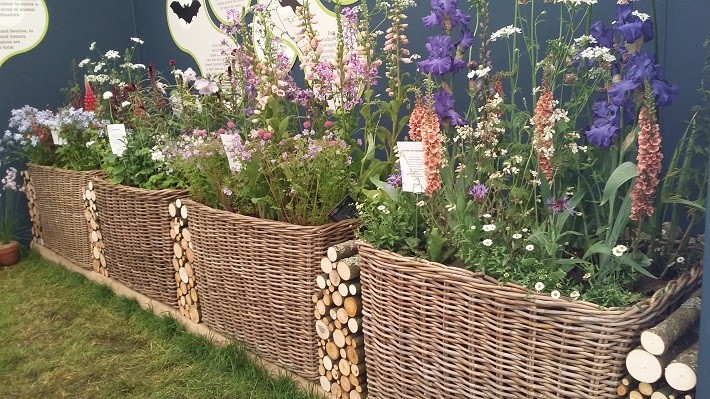
The scientific content was developed by more than 25 researchers, including Ken Thompson, Jeff Ollerton, Manpreet Dhami, Jane Memmott and Alice Hughes, and was staffed by ecologists at the forefront of pollination ecology and horticultural science, including PhD students, mid-career researchers and professors.
Interactive elements
The display incorporated a wealth of scientific knowledge and presented it in an interactive and engaging way, with many different elements for visitors to explore.
Nectar yeasts
Ecologists have discovered that a yeast called Metschnikowia plays a key part in the pollination story and – for the first time in Chelsea’s history – visitors to the flower show will be able to get a sniff of it visitors to the RHS Chelsea Flower Show will be able to get a sniff of it and see how lovely it looks under the scanning electron microscope.
Visit our nectar yeast webpage to find out more and access the BES Chelsea press release.
Painted Lady caterpillars
The display featured a fantastic terrarium containing Painted Lady caterpillars (Vanessa cardui) feeding on the common nettle (Urtica dioica). By bringing Painted Ladies to RHS Chelsea we want to communicate to gardeners that it is important to cater for the larval stages of butterflies if we are to see the beautiful adults in our gardens.
The Beauty of Pollination – Moving Art
We are incredibly lucky to have been given permission to show Louie Schwartzberg‘s wonderful short film ‘The Beauty of Pollination – Moving Art’. This film perfectly captures the intricate world of flowers and the process of pollination.
The published science
We publish cutting edge research in five peer reviewed journals. To celebrate attending RHS Chelsea we have identified five pieces of research that relate directly to horticulture, and have made them free to access.
This research addresses important questions such as, ‘are native plants better for pollinators than exotics?’, and ‘how good are horticultural varieties at attracting pollinators?’.
Resources:
Please click here to read the associated press release.
Please click here to download the Delight in the Dark_plant list.
Like what we stand for?
Support our mission and help develop the next generation of ecologists by donating to the British Ecological Society.